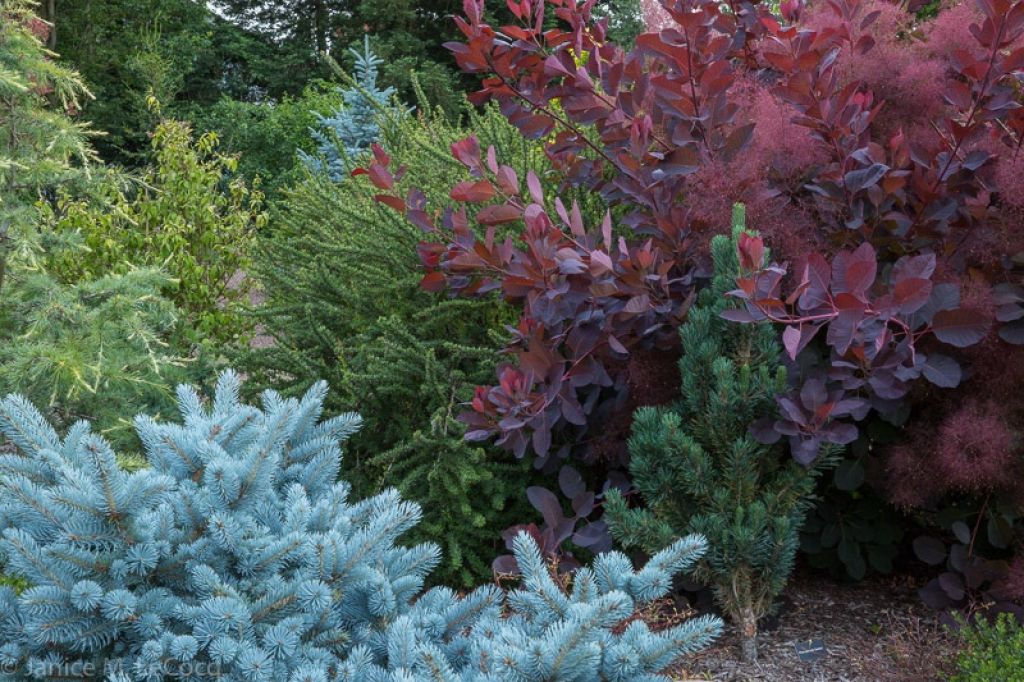
In spring the go-to colors are pastels, and the foliage garden certainly has its share of baby blues and soft yellows. However, they often share the garden space with deep, grown-up purple, which contrasts richly with the softer hues. Colorado blue spruce cultivars (Picea pungens cv.) are the quintessential powder blue foliage plants. When paired with other pastels, they have a demure persona, belying the strength inherent in their tough, spiky needles. Around purple, however, the blue acquires a steely note.
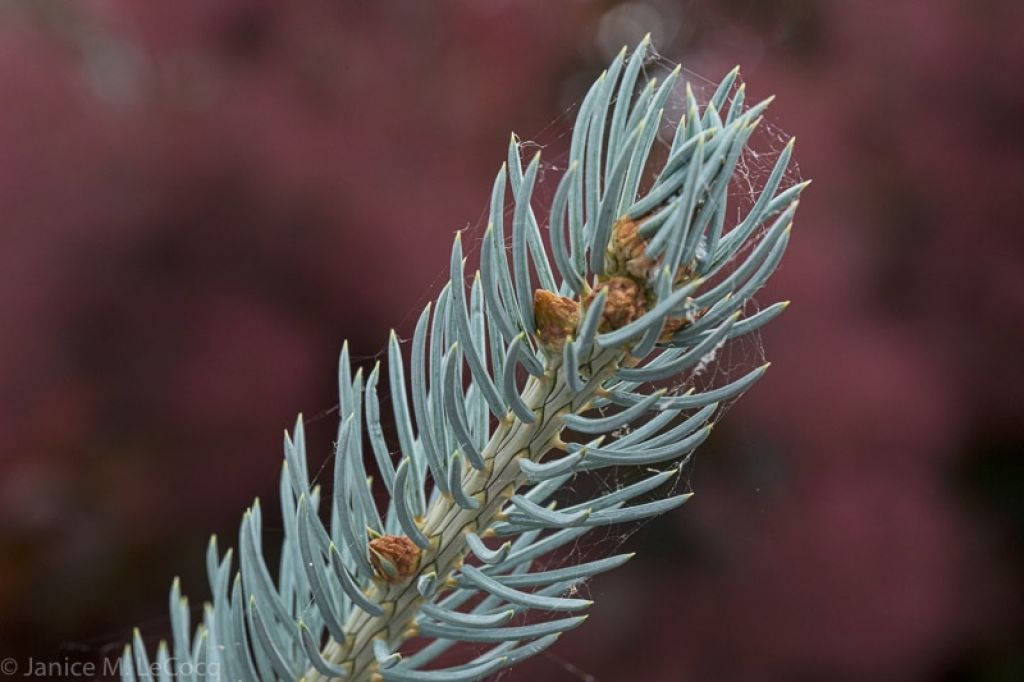
Purple works well as a background color, especially if you want the background to be, well, in back. Lighter colors draw the eye, darker ones recede. A purple background allows the plants in front to claim the attention.
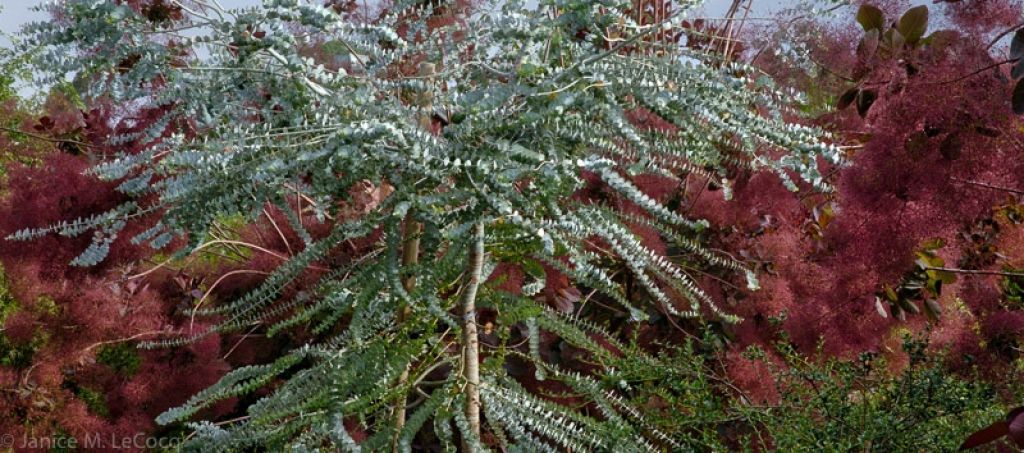
The Eucalyptus in the shot above is about as pastel as it gets, yet takes on a more sophisticated mien when backed by smoky Cotinus x ‘Grace’.
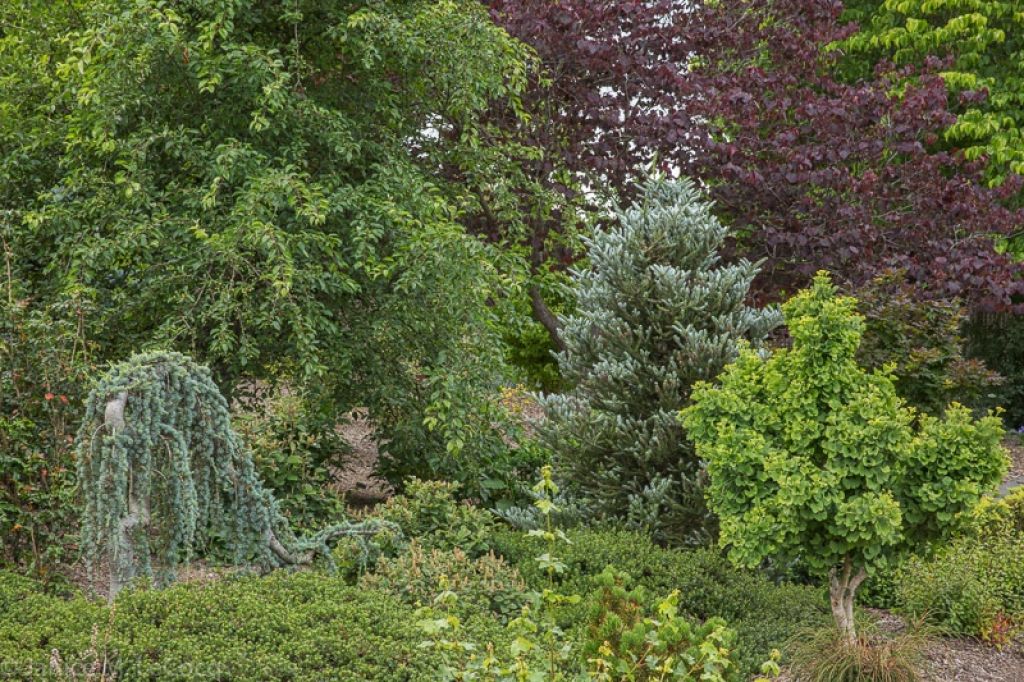
Cercis canadensis ‘Forest Pansy’ is a lovely, if somewhat awkwardly shaped, small tree. Here it is planted behind a grouping of different shades of blues and greens and serves as a backdrop which adds richness to the scene and disguises its lanky branching.
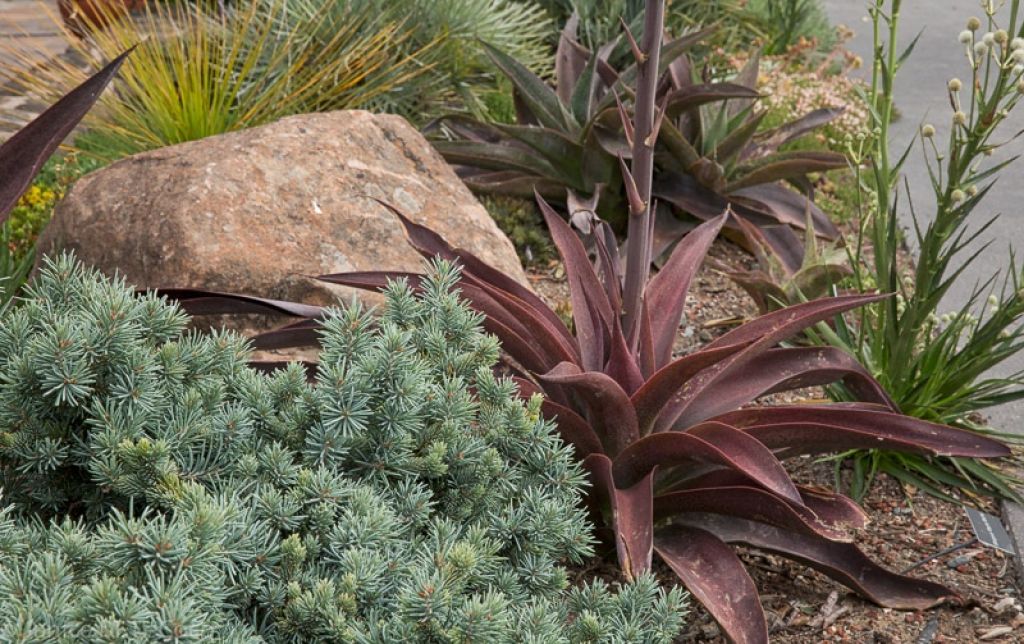
Succulents are a good place to look for ‘evergreen’ purples; the Mangave above is another great companion for blue spruce. Not only do the colors provide fabulous contrast but the strappy leaves of the Mangave are a wonderful foil for the spruce’s small needles. And in true F&F fashion, these plants do the job all 12 months of the year.
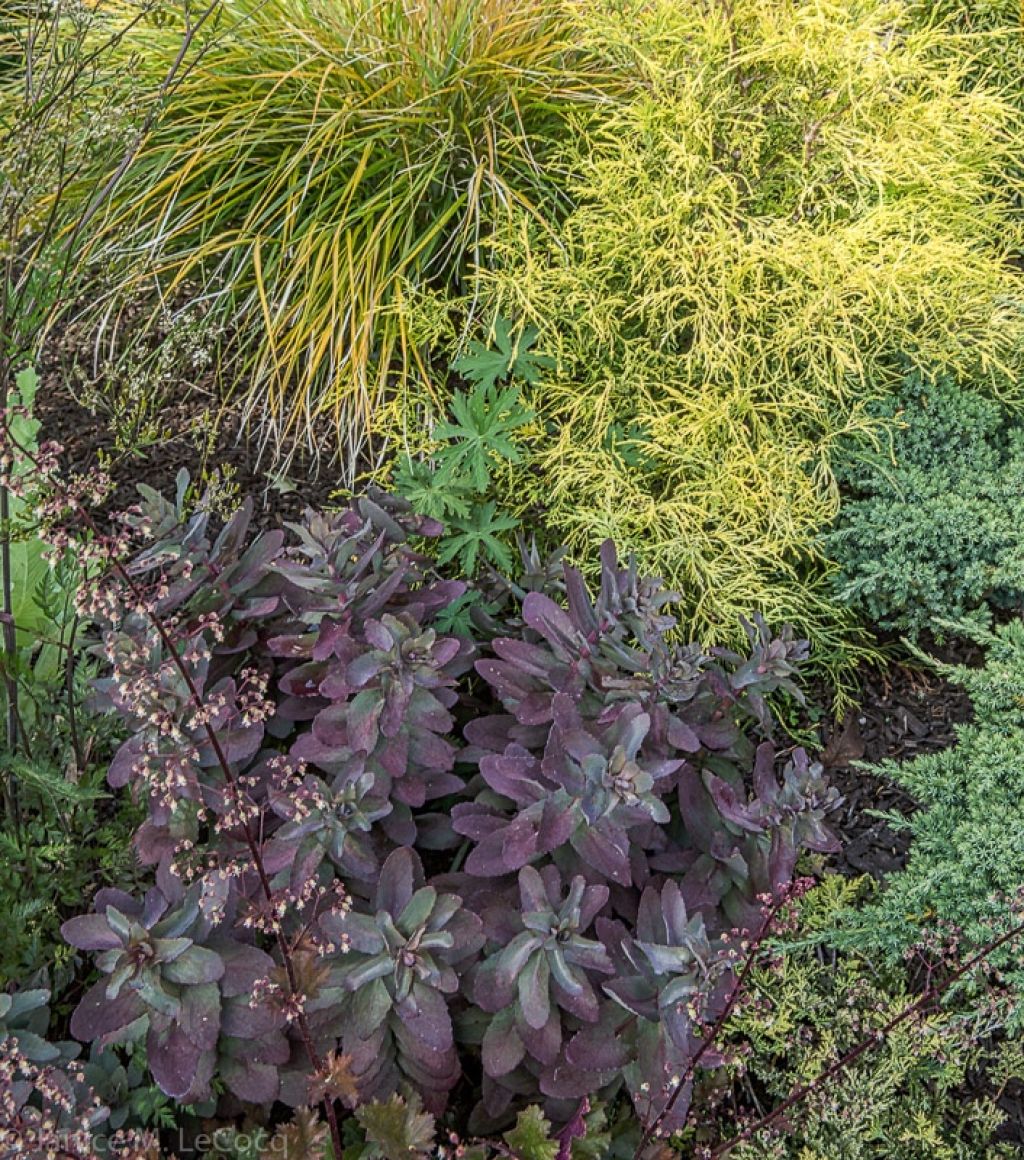
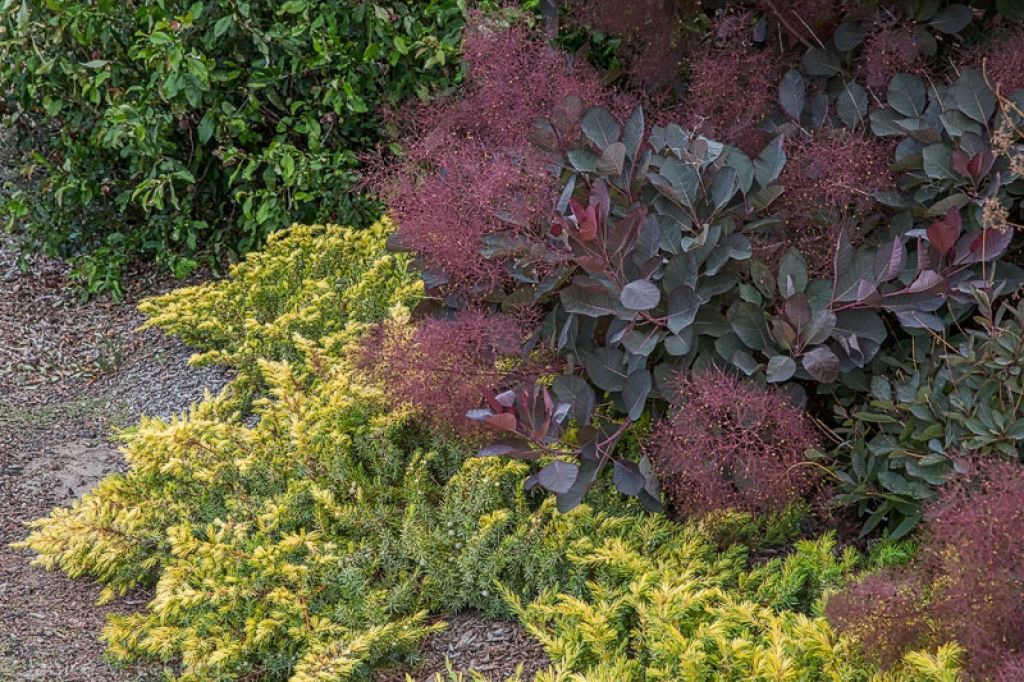
For a stained glass effect, mix purple with other saturated tones such as the greens and yellows pictured above. Paired with the yellow the purple warms up and creates deep contrast to the other colors.
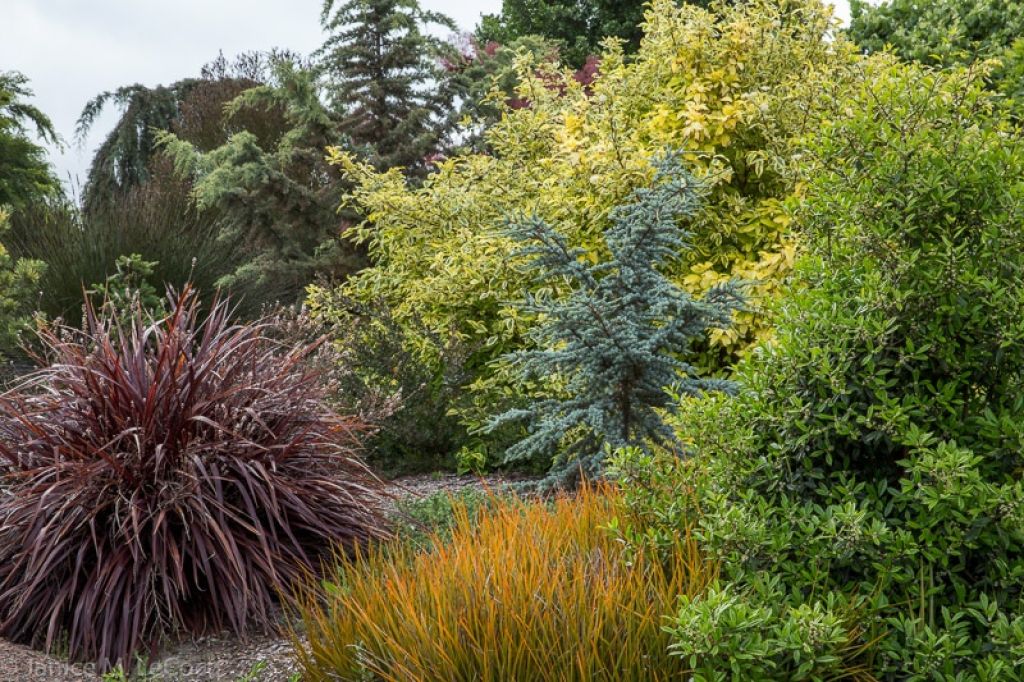
There are many grass-like plants (and even some true grasses) that add purple to the garden. The Cordyline‘Design-a-Line Burgundy’ in the photo above adds depth and flair to what would otherwise be a colorful but flat combination, and, like the Libertia peregrinans (the orange grass) and the blue spruce and holly, holds its leaves all year. Many Phormium come in shades of purple and for those that don’t mind the maintenance, there are several Pennisetum cultivars in deep purple tones.
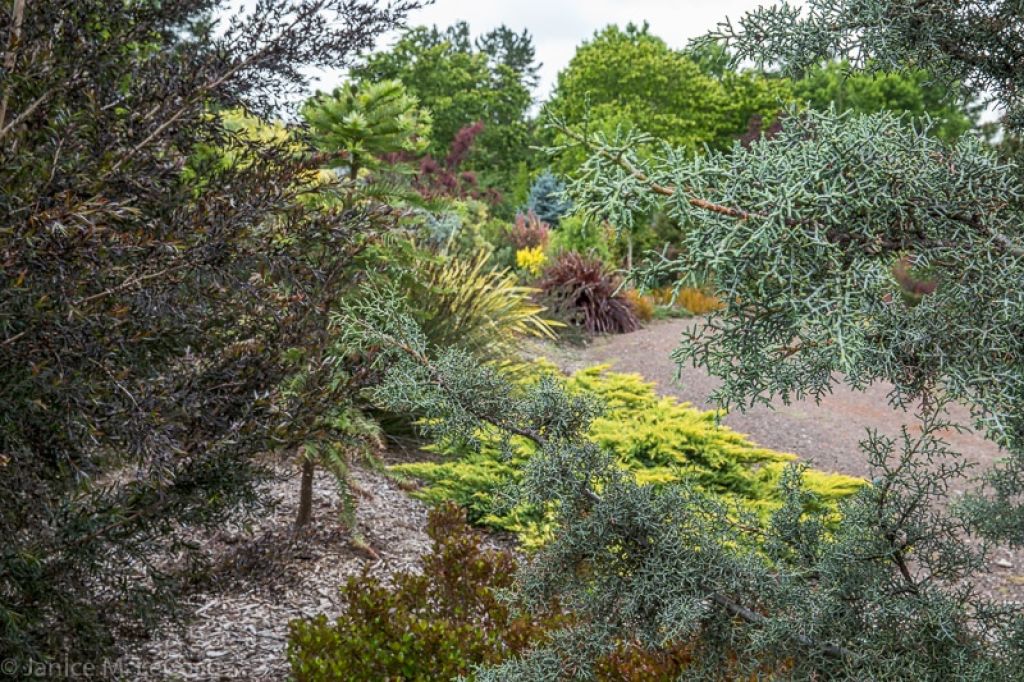
Colors work best when they are not isolated; don’t hesitate to echo the tones throughout the garden. If you look carefully at the above photo you will also see a bit of purple in the far back about 3/4 of the way across the photo, as well as some purple tones on the plant in the immediate middle front.
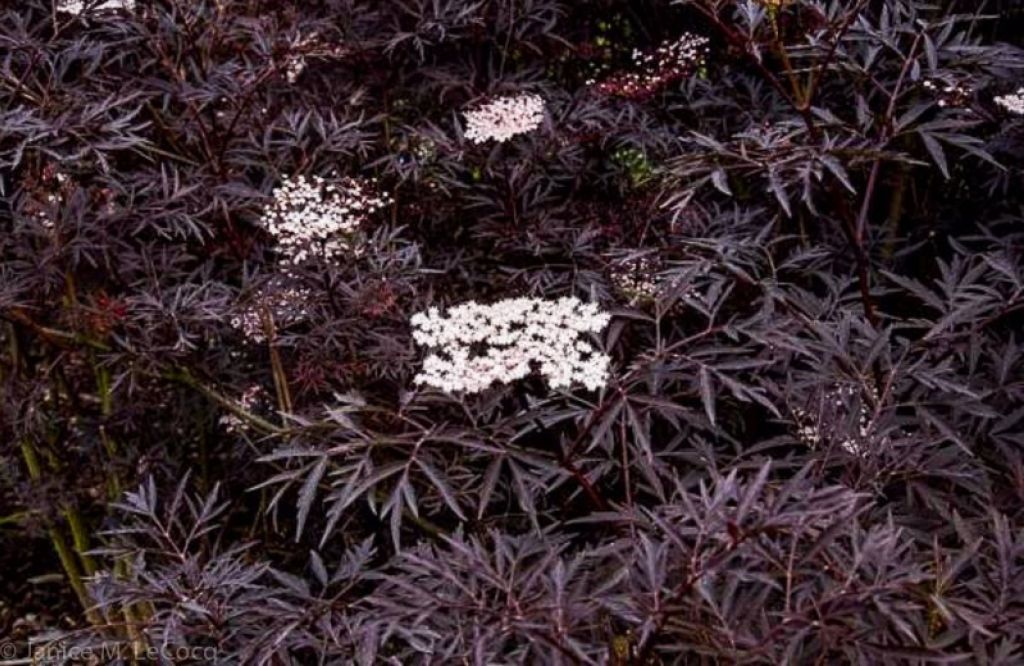
Apparently the colors ‘Blue’ and ‘Black’ sell better than the color purple. There are many plants sold as blue or black that are really purple, such as the Sambucus (elderberry) above. Remember, when selecting your plants, go by what the foliage looks like, not what the label promises. This Sambucus is deep wine-purple, and can be grown as a large shrub or limed up to make a small tree.
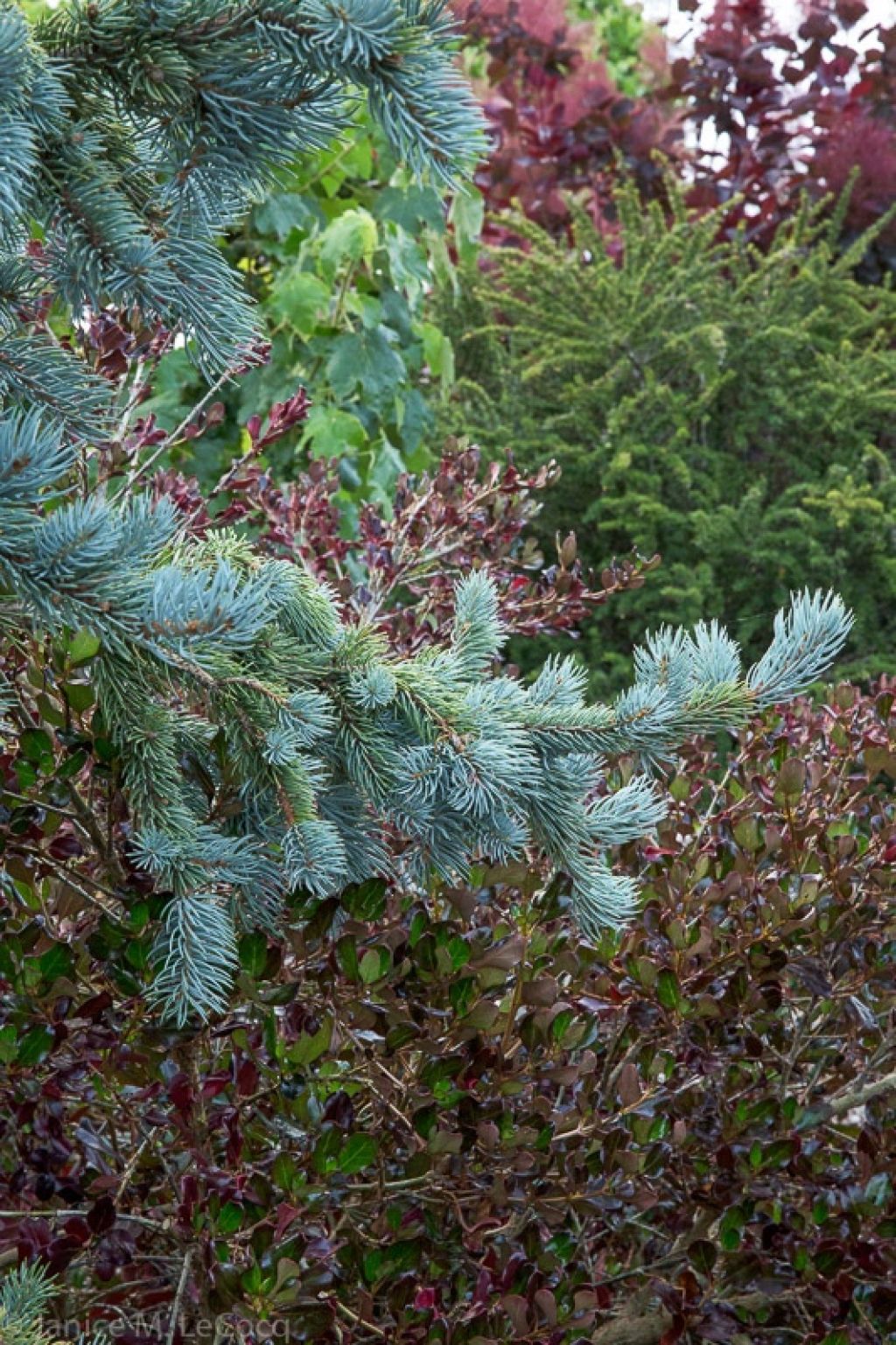
Purple gets more subtle in plants with two-toned leaves like the ‘Plum Hussey’ mirror plant. This cultivar of the New Zealand Coprosma leafs out bright green and the older leaves take on purple-tinged edges until the cold weather comes and drenches them in a deep, plummy coat. You can see Cotinus x ‘Grace’ in the background, striking, as befitting, a grace note. We can’t seem to stop pairing our purples with light blue, can we?
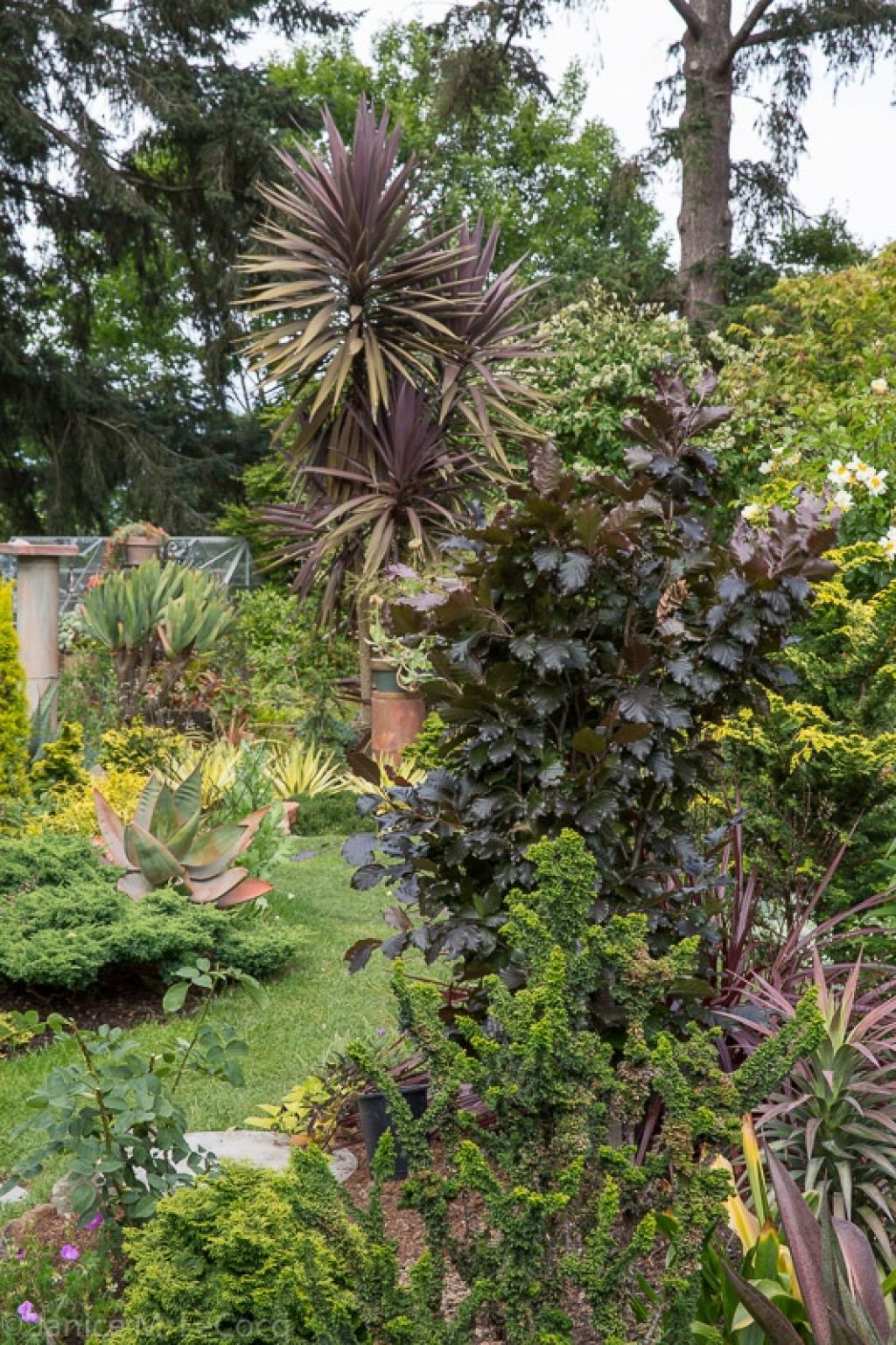
The genus Fagus, or beech, is another good place to go purple-hunting. In the shot above the tones of the large Cordyline in the back are picked up and carried forward by the glossy purple beech. The Yucca ‘Blue Boy’ (really purple, but that didn’t make for the alliterative name) in the lower right hand corner continues the theme.
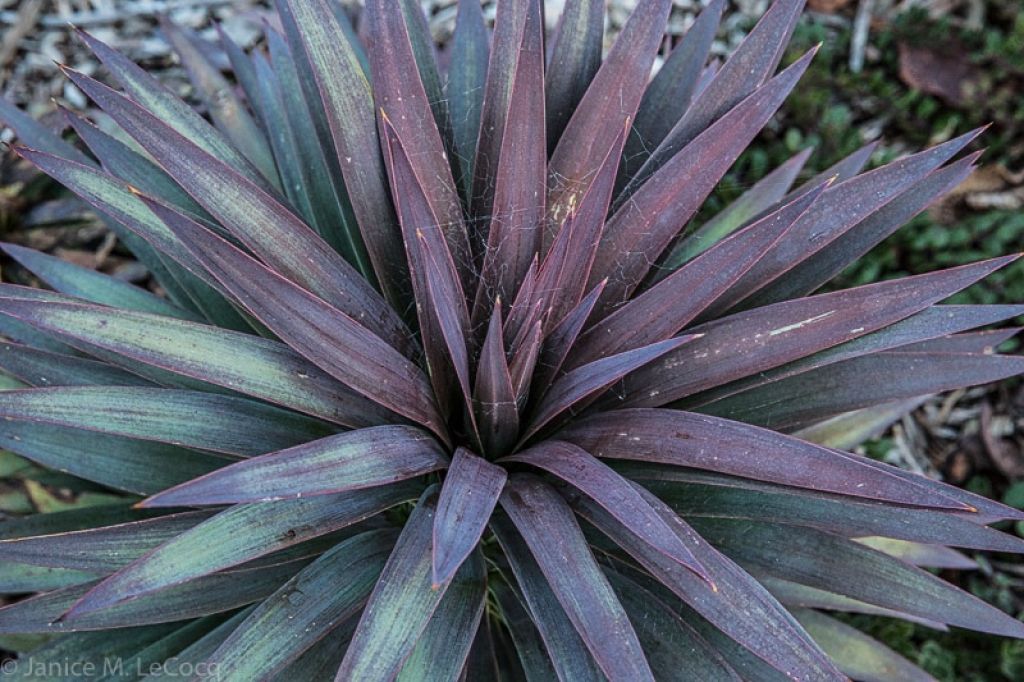
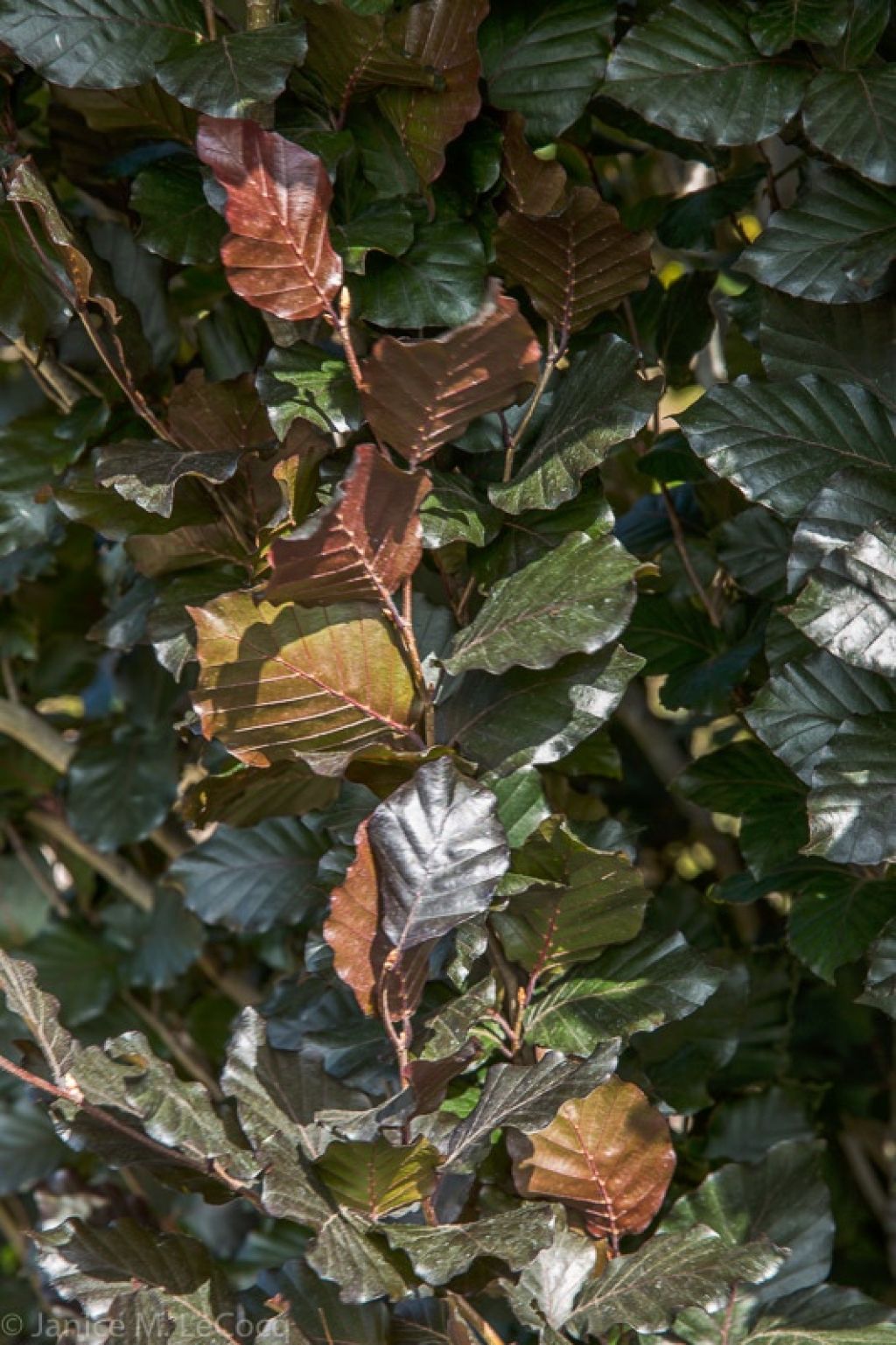
Beech trees (Fagus sp.) are welcome additions to gardens that are climate-appropriate because of not only their beautifully colored and textured leaves–at once both glossy and fuzzy–but also their elegant, silky bark which graces the winter landscape. They do best in spots with ample rainfall but once established will manage fine in even mild Mediterranean climates with little more water than some of the drought-hardy standbys.
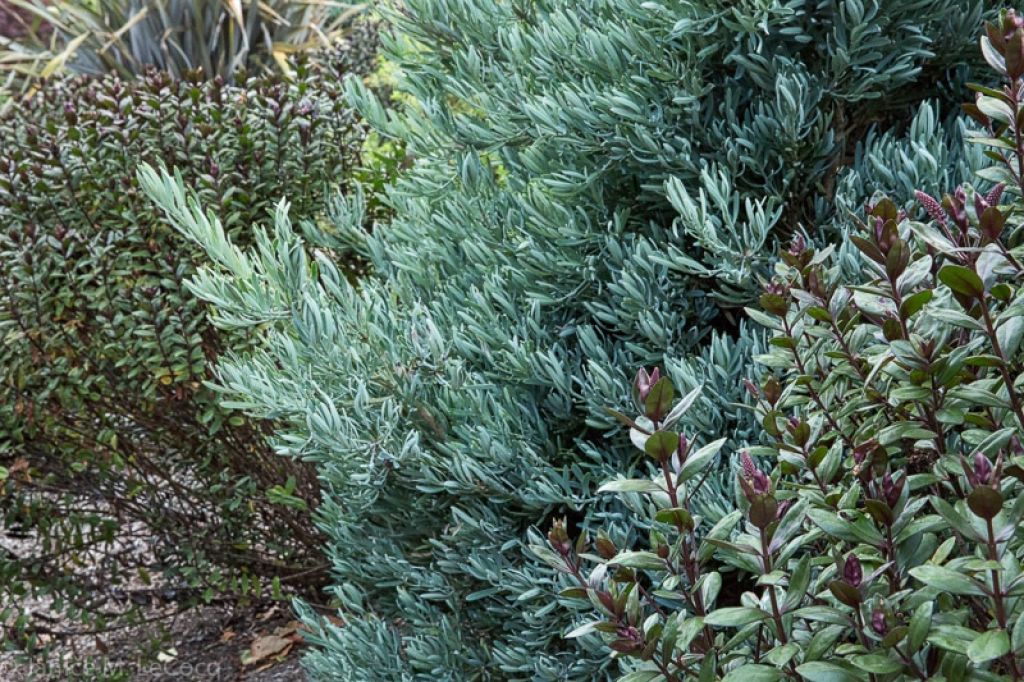
Purple doesn’t have to be bold or strident; there are many plants with purple leaf edges or undersides, like Hebe ‘Amy’ in the photo above. ‘Amy’ also has purple flowers, but they are ephemeral. The leaves and stems are purple all year long.
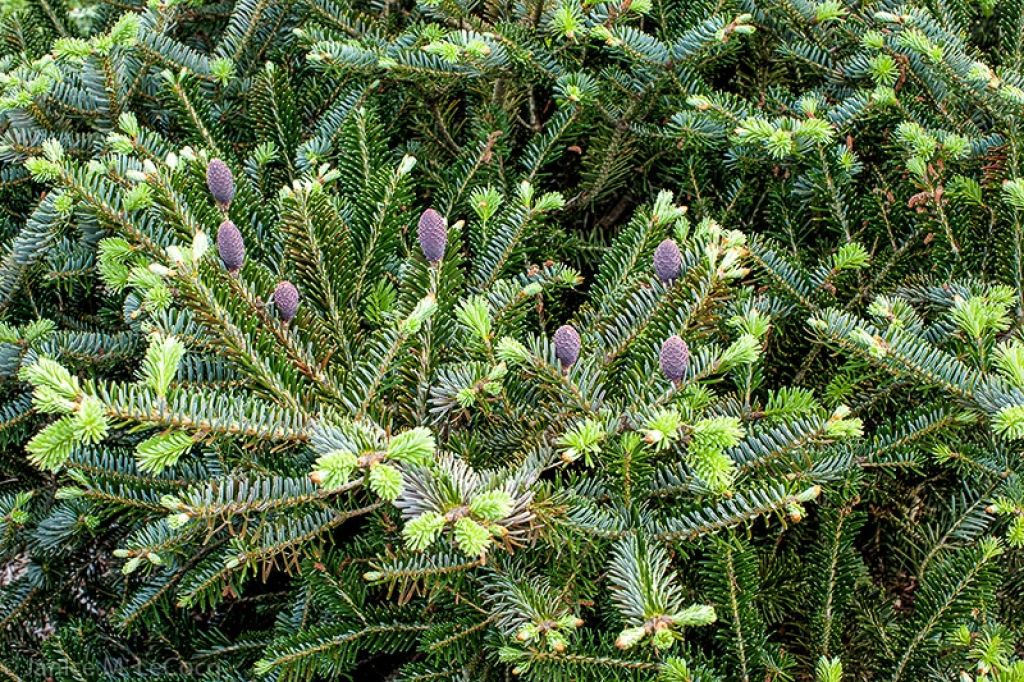
For real subtlety, treat purple as an ornament, the way that one might wear an amethyst ring or a garnet brooch. The cones on the ‘Poulsen’ fir are luscious, deep purple and decorate the shrub for months in spring and early summer.
Get your purple on!